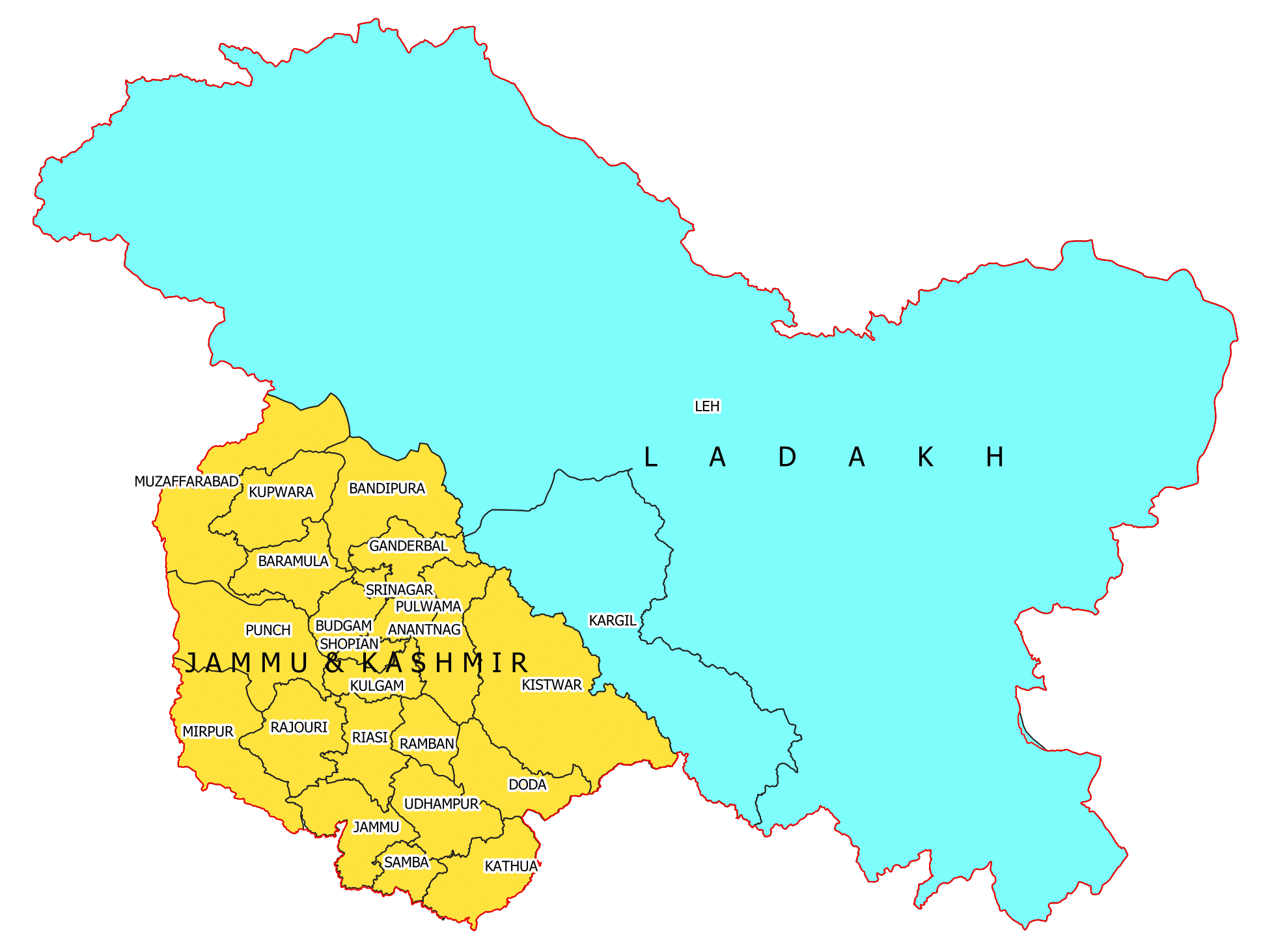Indian Polity
Demand for Including Ladakh under Sixth Schedule
- 16 Dec 2021
- 7 min read
For Prelims: Parliament, Union Territory (UT) of Ladakh , Sixth Schedule of the Constitution, Autonomous District Councils (ADCs), National Commission for Scheduled Tribes (NCST)
For Mains: Significance of Sixth Schedule of the Indian Constitution, Demand of inclusion of Union Territory (UT) of Ladakh in the Sixth Schedule of the Indian Constitution impediments in the way of inclusion.
Why in News
Recently, a demand has been raised in Parliament to include the Union Territory (UT) of Ladakh in the Sixth Schedule of the Constitution to safeguard land, employment, and cultural identity of the local population.
- The Jammu and Kashmir Reorganisation Act, 2019 was introduced to bifurcate the State into two separate union territories of Jammu and Kashmir (with legislature), and Ladakh (without legislature).
Key Points
- Need of Inclusion in Sixth Schedule:
- The administration of the UT of Ladakh region is now completely in the hands of bureaucrats. The government now looks even more distant than Srinagar.
- The changed domicile policy in Jammu and Kashmir has raised fears in the region about its own land, employment, demography, and cultural identity.
- The UT has two Hill councils in Leh and Kargil, but neither is under the Sixth Schedule.
- Their powers are limited to collection of some local taxes such as parking fees and allotment and use of land vested by the Centre.
- NCST Recommendation:
- The National Commission for Scheduled Tribes (NCST) has recommended that the Union Territory (UT) of Ladakh be included in the Sixth Schedule of the Constitution.
- NCST, a constitutional body to safeguard socio-cultural rights of Scheduled Tribes, was entrusted with the responsibility of examining the status of tribals in Ladakh, by the Centre.
- If included, Ladakh will be the only UT in the Sixth Schedule. Also, bestowing such a status to Ladakh would require a constitutional amendment.
- Reasons Behind the Recommendation
- It is estimated that more than 90% of Ladakh’s population is tribal. The primary Scheduled Tribes (STs) in Ladakh are Balti Beda, Bot (or Boto), Brokpa (or Drokpa, Dard, Shin), Changpa, Garra, Mon and Purigpa.
- The Ladakh region has several distinct cultural heritages by communities such as Drokpa, Balti and Changpa, among others, which needs to be preserved and promoted.
- Prior to the creation of the Union Territory of Ladakh, people in Ladakh region had certain agrarian rights including right on land which restricted people from other parts of the country to purchase or acquire land in Ladakh.
- Inclusion in the sixth schedule will help in democratic devolution of powers in the region and will also enhance the transfer of funds for speedy development of the region.
- The National Commission for Scheduled Tribes (NCST) has recommended that the Union Territory (UT) of Ladakh be included in the Sixth Schedule of the Constitution.
- Difficulty Behind Ladakh’s Inclusion:
- Ladakh’s inclusion in the Sixth Schedule would be difficult. The Constitution is very clear, the Sixth Schedule is for the Northeast.
- For tribal areas in the rest of the country, there is the Fifth Schedule.
- Notably, no region outside the Northeast has been included in the Sixth Schedule.
- In fact, even in Manipur, which has predominantly tribal populations in some places, the autonomous councils are not included in the Sixth Schedule.
- Nagaland and Arunachal Pradesh, which are totally tribal, are also not in the Sixth Schedule.
- However, it remains the prerogative of the government, it can, if it so decides, bring a Bill to amend the Constitution for this purpose.
- Ladakh’s inclusion in the Sixth Schedule would be difficult. The Constitution is very clear, the Sixth Schedule is for the Northeast.
Sixth Schedule
- Article 244: The Sixth Schedule under Article 244 provides for the formation of autonomous administrative divisions — Autonomous District Councils (ADCs) — that have some legislative, judicial, and administrative autonomy within a state.
- The Sixth Schedule contains special provisions for the administration of tribal areas in the four north-eastern states of Assam, Meghalaya, Tripura and Mizoram.
- Autonomous Districts: The tribal areas in these four states have been constituted as autonomous districts. The governor is empowered to organise and re-organise the autonomous districts.
- The acts of Parliament or the state legislature do not apply to autonomous districts or apply with specified modifications and exceptions.
- The power of direction, in this regard, lies either with the President or Governor.
- District Council: Each autonomous district has a district council consisting of 30 members, of whom four are nominated by the Governor and the remaining 26 are elected on the basis of adult franchise.
- The elected members hold office for a term of five years (unless the council is dissolved earlier) and nominated members hold office during the pleasure of the governor.
- Each autonomous region also has a separate regional council.
- Powers of the Council: The district and regional councils administer the areas under their jurisdiction.
- They can make laws on certain specified matters like land, forests, canal water, shifting cultivation, village administration, the inheritance of property, marriage and divorce, social customs and so on. But all such laws require the assent of the Governor.
- They can constitute village councils or courts for trial of suits and cases between the tribes. They hear appeals from them. The jurisdiction of the high court over these suits and cases is specified by the governor.
- The district council can establish, construct or manage primary schools, dispensaries, markets, ferries, fisheries, roads and so on in the district.
- They are empowered to assess and collect land revenue and to impose certain specified taxes.





